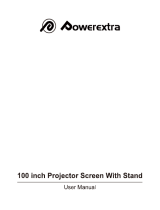
Table of contents
14.6.1 Files and file manipulations. .................................................................................................147
14.6.2 Manual Load file .............................................................................................................147
14.6.3 File Load Filter ...............................................................................................................148
14.6.4 Delete a file ..................................................................................................................148
14.6.5 Delete all custom files .......................................................................................................149
14.6.6 Rename custom files ........................................................................................................150
14.6.7 Copy custom file .............................................................................................................151
14.6.8 Image file service options, Load file.........................................................................................152
14.6.9 Image file service options, Auto Picture Alignment .........................................................................153
14.7 Save custom settings...............................................................................................................153
14.8 Splash image .......................................................................................................................153
15. Layout ............................................................................................................. 155
15.1 Layout menu overview .............................................................................................................155
15.2 Start up the layout adjustments....................................................................................................155
15.3 Introduction .........................................................................................................................156
15.4 Main window . .......................................................................................................................156
15.4.1 Main window source selection...............................................................................................156
15.4.2 Main window size ............................................................................................................157
15.4.3 Main window position ........................................................................................................158
15.5 PiP window . ........................................................................................................................159
15.5.1 Introduction to PIP . . .........................................................................................................159
15.5.2 Picture in Picture activation..................................................................................................160
15.5.3 PiP window, source selection................................................................................................160
15.5.4 PiP window, Size ............................................................................................................161
15.5.5 PiP window, position . ........................................................................................................162
15.6 Layout File Services................................................................................................................163
15.6.1 Load layout file...............................................................................................................163
15.6.2 Rename layout file...........................................................................................................164
15.6.3 Delete layout file .............................................................................................................165
15.6.4 Delete all layout files.........................................................................................................165
15.6.5 Copy or Save as layout file ..................................................................................................166
15.7 Lens behavior.......................................................................................................................167
16. Laser............................................................................................................... 169
16.1 Laser menu overview...............................................................................................................169
16.2 Start up the laser adjustments .....................................................................................................169
16.3 laser power mode...................................................................................................................170
16.4 laser power .........................................................................................................................170
16.5 Auto dimming when on Pause .....................................................................................................171
16.6 Auto dimming when No Signal .....................................................................................................171
16.7 Auto dimming when Over-temperature ............................................................................................172
16.8 CLO mode (Constant light output mode) .. ........................................................................................172
16.9 CLO targets.........................................................................................................................174
16.10 Laser power.........................................................................................................................174
16.11 Laser identification..................................................................................................................175
16.12 XY-axis adjustment.................................................................................................................175
17. Alignment......................................................................................................... 177
17.1 Orientation ..........................................................................................................................177
17.2 Lens adjustment, zoom - focus . .. .................................................................................................177
17.3 Lens adjustment, shift ..............................................................................................................178
17.4 Lens adjustment, mid position .....................................................................................................179
17.5 Calbrate lens at startup.............................................................................................................179
17.6 Calibrate lens.......................................................................................................................179
17.7 Warping.............................................................................................................................180
17.7.1 About warping................................................................................................................181
17.7.2 Warp activation - deactivation ...............................................................................................181
17.7.3 Start up manual adjustment .................................................................................................182
17.7.4 Warp adjustment principle...................................................................................................182
17.7.5 Setting the warping level.....................................................................................................185
17.7.6 Warp adaptation steps .......................................................................................................185
17.7.7 Making selections and adjustments . ........................................................................................186
17.7.8 Keystone correction workflow ...............................................................................................187
17.7.9 Linearity adjustment, workflow ..............................................................................................188
17.7.10 Selecting and changing the position of a specific point.....................................................................189
17.7.11 Scaling the image............................................................................................................189
17.7.12 Shifting the image............................................................................................................190
17.7.13 Rotating the image. . .........................................................................................................190
17.7.14 Hardware Reset..............................................................................................................192
17.7.15 OSD opacity.. ................................................................................................................192
17.7.16 Warp file service, load file ...................................................................................................193
17.7.17 Warp file service, save to file ................................................................................................194
17.7.18 Warp file service, save as ...................................................................................................194
17.7.19 Warp file service, rename file................................................................................................195
17.7.20 Warp file service, delete file .................................................................................................195
R5906730 HDF WLP SERIES 01/08/2017
3





















